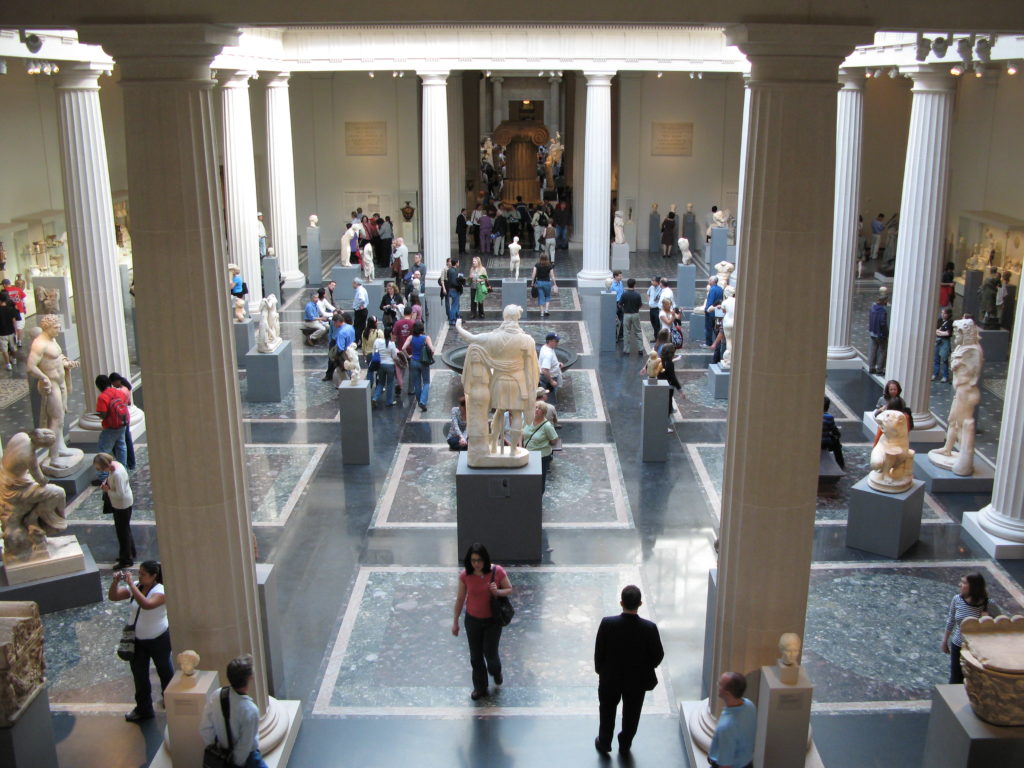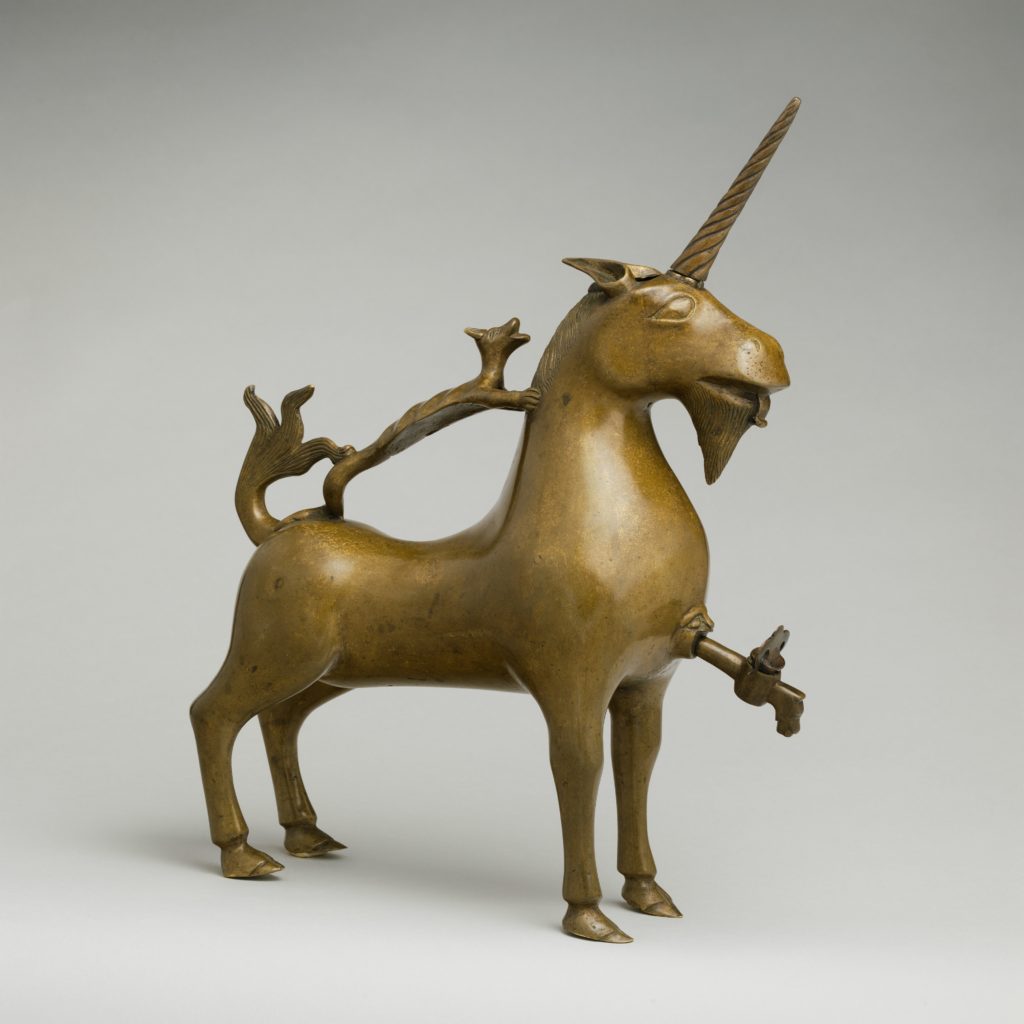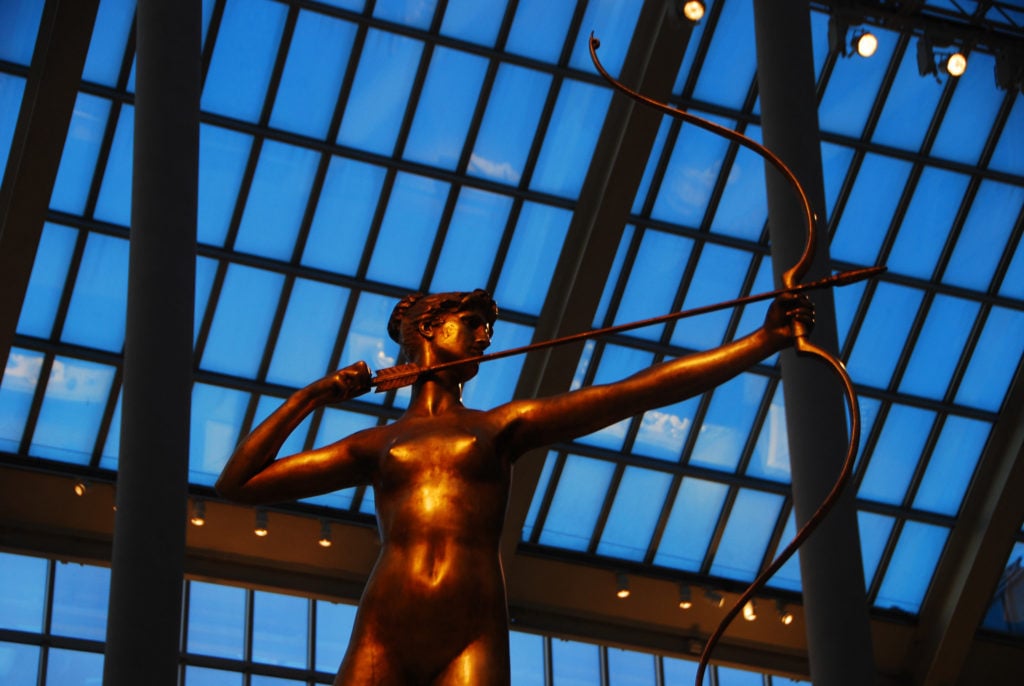Art World
Medievalists and Monster Scholars Unite to Decry the Met Museum’s New Admissions Policy
Even monster scholars are getting into the game, calling the museum's mandatory admission prices exclusionary.

Even monster scholars are getting into the game, calling the museum's mandatory admission prices exclusionary.

Brian Boucher

Yet another group has made a bold statement decrying the Metropolitan Museum of Art’s new policy of charging out-of-state visitors $25 admission. This time, the opponents are monster scholars, feminist medievalists, and a professional association of art historians, artists, and art critics.
In an open letter dated February 5, scholars and artists from five organizations asserted that the museum should remain accessible to visitors of different regions and socioeconomic backgrounds: “The Met has so very much to offer, to teach, and this cannot be restricted to those from only a single region or socioeconomic stratum,” they wrote. “We ask you to reconsider the new entrance fee policy.”
The signatories claim that the museum’s rich collection is “part of the larger public commons. It is a public good in which every American has a stake, and in which every visitor to the city should feel welcome.”
The letter was sent to the museum’s president and CEO, Daniel Weiss, who is addressed as “a fellow medievalist.” (Weiss earned his PhD in medieval art history.)
The signatories include the BABEL Working Group, which describes itself as “a non-hierarchical scholarly collective and para-institutional desiring-assemblage with no leaders or followers, no top and no bottom, and only a middle.” Also on board is MEARCSTAPA, or, “monsters: the experimental association for the research of cryptozoology through scholarly theory and practical application.” The College Art Association, boasting a membership of upward of 10,000 arts professionals, has signed on as well.

Aquamanile in the Form of a Unicorn (ca. 1425–50). Metropolitan Museum of Art.
“The Met is one of the largest, most encyclopedic museums on the planet, and so I think there has to be another way to figure out how to balance their budget than denying access,” Hunter O’Hanian, CAA’s executive director and CEO, told artnet News. “Twenty-five dollars is a barrier to many people. Cultural institutions have a long history of being exclusionary bastions of white males. Access is at the core of what I hear from our members.”
O’Hanian is also concerned about the financial health of the broader community of US museums, many of which, he says, “have gotten themselves addicted to the gate [charging admission]. I get it. I understand it. But I don’t know if limiting access is the way to solve that problem.”

The Metropolitan Museum of Art. Photo Jon Mannion, via Flickr.
Monster scholar and art historian Asa Mittman, professor and chair of art and art history at California State University, Chico, doesn’t accept Weiss’s arguments either.
“Dr. Weiss calls the cost ‘inconvenient,'” Mittman wrote in an email to artnet News, “and says that if they don’t like this cost, people could just pay $100 to become a member, but this isn’t practical for many potential visitors. Responding to the charge that $25 is too high with ‘they can pay $100’ does not make sense. It suggests that he does not have a good sense of what $25 means to many Americans. I have had students drop out of college for want of $200.”
In a response to the letter writers, sent to artnet News via email, the museum’s president and chief executive officer, Daniel Weiss, pushed back on the letter’s claims. “We wholeheartedly agree that The Met is embraced globally as a public good,” Weiss writes. “But such a statement moves us no further in understanding how this magnificent institution is to be funded. The pay-as-you-wish policy has become, pure and simple, an experiment that has effectively failed.”
As for how the museum serves its non-affluent public, Weiss points to the institution’s free event programming, much of which is educational in nature. “I would invite you to look more closely at our programs, which do an extraordinary job of serving the public,” he says. “In brief, we sponsor more than 30,000 free events each year. We reach more than 200,000 schoolchildren each year.”
Weiss also takes issue with the letter’s suggestion that the Met views criticism of the new policy as ignorant. “This is decidedly not the case,” he writes. “We hold our visitors and supporters in the highest regard, and we have the utmost respect for their intelligence and passionate commitment to The Met.”
Read the full text of the open letter below, followed by Weiss’s response.
Dear Dr. Weiss,
We are writing to you, a fellow medievalist, on behalf of several Medieval Studies and Art History organizations concerned about the change in admissions charges at the Metropolitan Museum of Art. The Met has been, for many of us, a guiding institution, a temple, and a home away from home. Many of us have given tours of, conducted research in, and brought students to both The Cloisters and the main Fifth Avenue site. We deeply respect the institution and believe it is important not only to us and our students, but to the public in the broadest possible sense — to the global commons for which it was made and to which it properly belongs. The Met has so very much to offer, to teach, and this cannot be restricted to those from only a single region or socioeconomic stratum. We ask you to reconsider the new entrance fee policy.
The Met’s mission is clear:
The Metropolitan Museum of Art collects, studies, conserves, and presents significant works of art across all times and cultures in order to connect people to creativity, knowledge, and ideas.
We note that the statement does not say “New Yorkers,” or “wealthy people,” but simply “people.” We take this to mean that the mission is to connect as many people as possible to this storehouse, this treasure trove of creativity, knowledge, and ideas. The new admissions policy stands in opposition to this goal.
We are well aware of the financial struggles facing the Met. We appreciate their seriousness, and realize that some changes are necessary in order to preserve the institution. However, we believe that there simply must be a way to accomplish this without mandating a $25 admission fee for all visitors from outside the state (with out-of-state students paying $12). The Met is a New York institution, but is not for New York. It is part of the larger public commons. It is a public good in which every American has a stake, and in which every visitor to the city should feel welcome. The same goes for foreign visitors from countries well-represented in the Met’s collections, who would be deterred by the cost from visiting a repository of their own cultural expression.
We have listened to your interview with Brian Lehrer on WNYC but are unconvinced. You say that The Met is already very welcoming, but we fear that you do not know how your museum is often viewed by those from well outside its usual orbit. We have heard, time and again, from students who have traveled to New York but have decided to skip The Met not because they lack interest in the arts, nor because of the cost per se, which until now was up to them, but because they viewed it as an institution for other people.
We would press further: the status quo was already insufficient before this recent announcement. While The Met was installing costly new fountains, it missed opportunities to reach out to marginalized communities. While it was hosting galas, it passed up chances to show the poor and working classes how much of their own stories are housed in its galleries. While it was expanding into The Breuer, it might have been raising funds, as other US museums successfully have done, to bring children, college students, low-income communities, parolees, immigrants, and any number of other groups, local and distant, into its astonishing galleries, to make clear that these collections are for them. In not doing so, The Met abandons New York’s great tradition of free and low-cost public access to educational and cultural institutions, a tradition that was once the engine of social betterment for low-income and working class families, not just in New York but throughout the United States.
You state in the WNYC interview that you are confident that the change in admissions will not hurt attendance, and imply that the considerable pushback is rooted in ignorance. We wish to point out, however, that those pushing back are not ill-informed. Many of us are art historians; many have worked and some are currently employed in museums; many are from, have lived in, and spend considerable time in New York. Many of us work with lower-income groups, and some of us emerged from those very groups to become the teachers, interpreters, and champions of what we then sincerely believed was our museum. We do know what we are talking about. We know that budgetary decisions are never just budgetary decisions. They are statements of priorities. We ask you to reconsider yours.
Sincerely,
The BABEL Working Group
The College Art Association
The Material Collective
MEARCSTAPA
The Society for Medieval Feminist Scholarship
Weiss’s reply:
Dear Colleagues:
Let me begin by expressing my gratitude for your thoughtful letter and energetic response to our recent announcement of the change in our admissions policy. It is abundantly clear that the organizations you represent have an important stake in The Metropolitan Museum of Art and in the place of culture in our society. However, I take issue with several of your arguments and insinuations, which I would suggest do not fairly represent our thinking, our values, or our specific plans.
We wholeheartedly agree that The Met is embraced globally as a public good. But such a statement moves us no further in understanding how this magnificent institution is to be funded. The pay-as-you-wish policy has become, pure and simple, an experiment that has effectively failed. As I have noted elsewhere, the percentage of visitors paying the suggested price has declined by 73 percent over the last twelve years, and this is simply not sustainable. Unlike many of our global peers, such as the Louvre, the British Museum, the National Gallery, and the Hermitage, we receive less than 10 percent of our funding from the government – the rest must come from elsewhere. The Met has depended on our visitors to use their own discretion in deciding what to contribute, and in recent years, for various reasons, they have decided to pay significantly less than the suggested amount. A public good must in some form be supported by the public.
In your letter you question our strategic priorities, citing galas and plazas rather than programs for the poor and working class. I would invite you to look more closely at our programs, which do an extraordinary job of serving the public. In brief, we sponsor more than 30,000 free events each year. We reach more than 200,000 schoolchildren each year. By all measures—from the depth of our programming to the breadth of our reach—The Met is a leader among our peers in ensuring the accessibility of our collections, special exhibitions, scholarly and children’s libraries, lectures and performances, and so much more.
Although you may disagree with our strategic priorities, I would respectfully point out that The Met did not become what it is today by accident. Our historic and steadfast commitment to excellence in programming, access, and service to the public remains at the center of who we are. But I return to the vexing problem of who pays for a public good like The Metropolitan Museum of Art. It is within this context, and mindful of our obligation to the financial health and sustainability of the Museum, that we made the decision after many years of reflection to modify the pay-as-you-wish policy.
As you probably know, access to virtually all art museums in this country requires mandatory admissions with a discount for students. Our new policy is no different from that of MoMA, the Guggenheim, the Whitney, The Art Institute of Chicago, and LACMA—with the two very important distinctions that we extend pay-as-you-wish admission to all New York State residents and to students of all ages from New York, New Jersey, and Connecticut, and that our general admission ticket will now provide access to all of our three museums for three consecutive days.
Finally, I was disappointed to read your insinuation that we view any criticism of this change to be rooted in ignorance. This is decidedly not the case. We hold our visitors and supporters in the highest regard, and we have the utmost respect for their intelligence and passionate commitment to The Met. What is clear, however, is that our current admissions policy is poorly understood, both with regard to its purpose and its administration. What we seek is fairness and the capacity to continue to be the institution so admired and beloved by all. As the world around us changes, so too must we adapt.
Again, many thanks for your engagement on this issue.
Dan Weiss
President and CEO
The Metropolitan Museum of Art